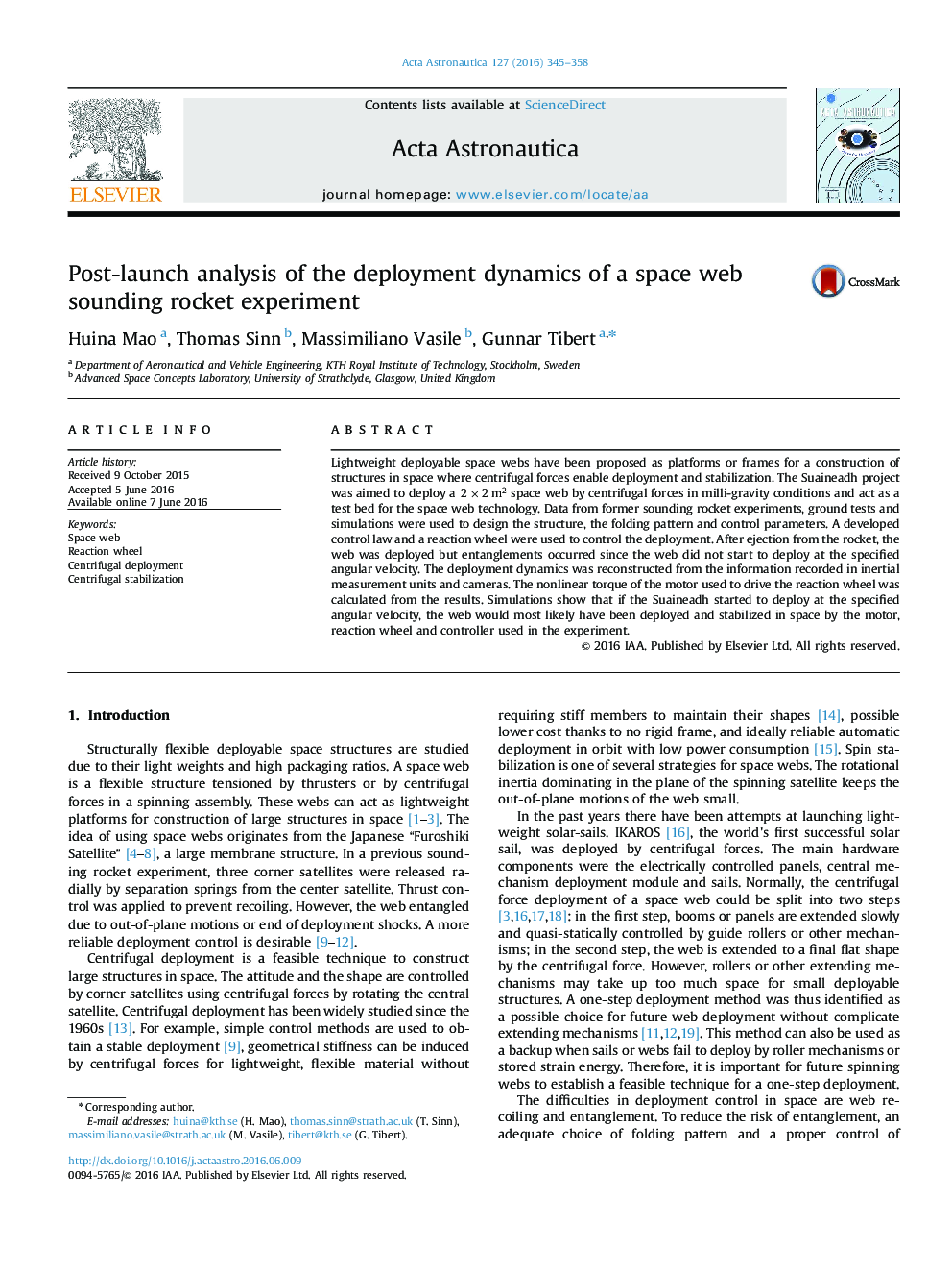| Article ID | Journal | Published Year | Pages | File Type |
|---|---|---|---|---|
| 8056030 | Acta Astronautica | 2016 | 14 Pages |
Abstract
Lightweight deployable space webs have been proposed as platforms or frames for a construction of structures in space where centrifugal forces enable deployment and stabilization. The Suaineadh project was aimed to deploy a 2Ã2m2 space web by centrifugal forces in milli-gravity conditions and act as a test bed for the space web technology. Data from former sounding rocket experiments, ground tests and simulations were used to design the structure, the folding pattern and control parameters. A developed control law and a reaction wheel were used to control the deployment. After ejection from the rocket, the web was deployed but entanglements occurred since the web did not start to deploy at the specified angular velocity. The deployment dynamics was reconstructed from the information recorded in inertial measurement units and cameras. The nonlinear torque of the motor used to drive the reaction wheel was calculated from the results. Simulations show that if the Suaineadh started to deploy at the specified angular velocity, the web would most likely have been deployed and stabilized in space by the motor, reaction wheel and controller used in the experiment.
Keywords
Related Topics
Physical Sciences and Engineering
Engineering
Aerospace Engineering
Authors
Huina Mao, Thomas Sinn, Massimiliano Vasile, Gunnar Tibert,
